Ecology & Zoology
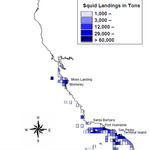
A couple of recent articles on the closure of the California market squid fishery focus on the southern (Van Zant in the Long Beach Press-Telegram) and northern (me in the Monterey Weekly) fishing grounds.
From the state's Market Squid Fishery Management Plan, which is available in its entirety here, comes a nice map showing the concentration of squid landings in the two primary fishing grounds: Monterey Bay and the Southern California Bight:
Catches from these two areas (and indeed, from the entire state) are pooled to determine when the harvest limit is reached. As for the limit itself, I…

Bummer! A shipment of Uruguayan squid (probably Illex argeninus, the same species of Falkland Islands' fame) has been blocked by the EU due to high cadmium content. Cadmium, like other heavy metals, is bad for you.
As quoted in MercoPress, the head of Uruguay’s Aquatic Resource Office said:
It's not a contamination incident but rather that the produce, when samples were taken before landing, howed levels above those specified as acceptable.
That means the squid were bioaccumulating cadmium from their environment, which is a bit concerning when you think of all the fish that eat squid--and…
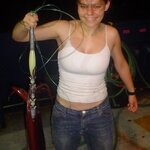
Squid are usually caught by means of a normal fishing line and a special hook-and-lure combination called a jig. Jigs are weighted, glow in the dark, and have several circles of upturned hooks on which the squid's arms and tentacles. Here is a squid jig (and a squid scientist) in normal use:
Here is a much more heartwarming use of the same equipment, to save baby birds from a construction site in Australia.
"It took four to five hours to get them out; physically it was too tight to get your hand in," she said. In the end, it was the gentle use of a "squid jig" (equipment used for squid…

Blue sharks in the Gulf Stream, in the western Atlantic, probably spend all day eating squid.
At first, that doesn't seem remarkable. Every big predator likes to eat squid, and sharks are no exception. And there are plenty of squid in the Gulf Stream, particularly Illex illecebrosus, which could arguably be referred to as the Humboldt squid of the western Atlantic. Illex illecebrosus and Dosidicus gigas are in the same family of large, muscular oceanic squid--Ommastrephidae--and they exhibit similar daily vertical migrations.
And that's why that first sentence up there is so very interesting…

Fluctuations in the world squid market tells us that
A sharp increase in landings of squid or giant squid (Dosidicus gigas) occurred in Chile in the first 10 months of 2010, over 243 per cent more compared to the same period in 2009 . . . With respect to Argentinian Illex squid (Illex argentinus), if landings during November are confirmed, in the 11 months of 2010 they would have captured 21 per cent more Illex squid than during the same period in 2009. However, the level of catches is far from that of previous years, highlighting the global crisis of cephalopods.
Interesting that catches of…

Ahh! Because I was so busy yesterday, I forgot to give you the other half of that baby squid. Here it is!
The little blob being held in those tiny, adorable arms is a yolk sac. When they are inside the egg, squid embryos have both an internal yolk sac (inside the mantle) and an external yolk sac (held in the arms). They are supposed to use up the whole external yolk sac before they hatch--so this little guy hatched prematurely.
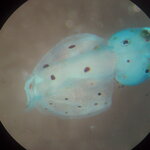
Because I am busy, today you get another picture. This is a baby market squid again, this time stained with methylene blue. Tomorrow (because I will still be busy) you will get to see the arms, which are missing in this picture. Suspense!
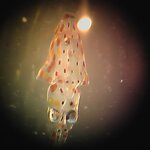
In honor of all the hullaballoo about California market squid (hullaballoo which I will soon be adding more to, stay tuned!) here are some pictures I took a few years ago. The subject is a baby market squid viewed through a microscope.
First it opens its mantle, or body cavity, to fill it with water:
Then it squeezes all the water out and goes zoom! This picture was taken milliseconds before it disappeared from view:
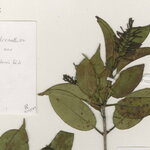
A parasitic, tropical mistletoe has been discovered near the summit of Mount Mabu in northern Mozambique and, just in time for Christmas, this new wild mistletoe has been named Helixanthera schizocalyx.
It was spotted by Royal Botanic Gardens, Kew East African butterfly specialist, Colin Congdon, while the team were trekking up the mountain, on a path that took them from the moist montane forest up to where the broad granite peaks break through the dense foliage. Congdon says he quickly realized this species was different from anything he had seen on the mountains in neighboring Malawi…

I had a beautiful dream on Thursday night.
Having recently graduated, I was cleaning up and moving out of my lab, and in particular, I was deciding what to do with the animals in the aquarium room. I had several small aquariums with young squid in them--not Humboldt squid, oddly, but glass squid, those ethereal denizens of the deep.
The first remarkable observation, as I watched the small transparent squid jetting around their aquarium, was that I could actually visualize the low Reynolds numbers at which they were moving. (Smaller animals have lower Reynolds numbers, indicating that they…